Cleaning the house doesn’t have to be a chore at all. You do not have to spend tons of money on commercial products to do dirty jobs. Home remedies often do the job more easily for free. If it is in your home already, you have already invested the money.
Many solvents in your bathroom and kitchen could be used instead of chemical solutions that take their toll on the environment and your budget, and come in a package that represent a significant part of the price. As there are great recipes for food, there are great recipes for cleaning!
1. Restore freshness to your mattress with baking soda

A mattress becomes noticeably slept-in over time, losing its aroma and smelling more like unwashed clothes or even becoming uncomfortable from mites. To keep a mattress smelling aromatic, feeling fresh and pest-free, it is good practice to clean it like you would any other furniture in your home regularly.
Sprinkling baking soda and essential oils onto a mattress will clean and rejuvenate it inside and out. Allow a few minutes for the solution to work before vacuuming it up. The mixture restores freshness and deters mites. Clove, Eucalyptus, Rosemary, Fennel and Tea Tree Oil are essential oils that kill mites.
2. Shaving cream stain remover remedy

Shaving cream dissolves stains on fixtures such as faucets, mirrors and shower heads. You know those pesky little unexplainable stains that are not derived from rust or other corrosion, but just seem to come from use?
Ever look at the drain in a bathroom sink and think, what is that? Maybe it was hair dye, cough syrup, a discarded beverage, or even a nose bleed that put the stain there, but it remains. Greg Shepard (owner of Dallas Maids) says shaving cream dissolves these stains in 15 minutes, allowing you to wipe away residual cream and rinse the surface clean.
3. Brush your garbage disposer with an old toothbrush
Your garbage disposer gets covered with gunk. This is not easy to see and hard to remember until you smell something in your kitchen sink, and it becomes obvious it is in the same drain the garbage disposal is in.
Scrubbing the blades of the garbage disposal unit with a baking soda and lemon juice like brushing teeth is a good way to get rid of the smell and ward off the pests. The acidity of the lemon juice and texture of the baking soda dissolve dried on particles of food, so you can more easily brush the blades clean.
4. Try dishwashing your dirty hairbrush on high heat
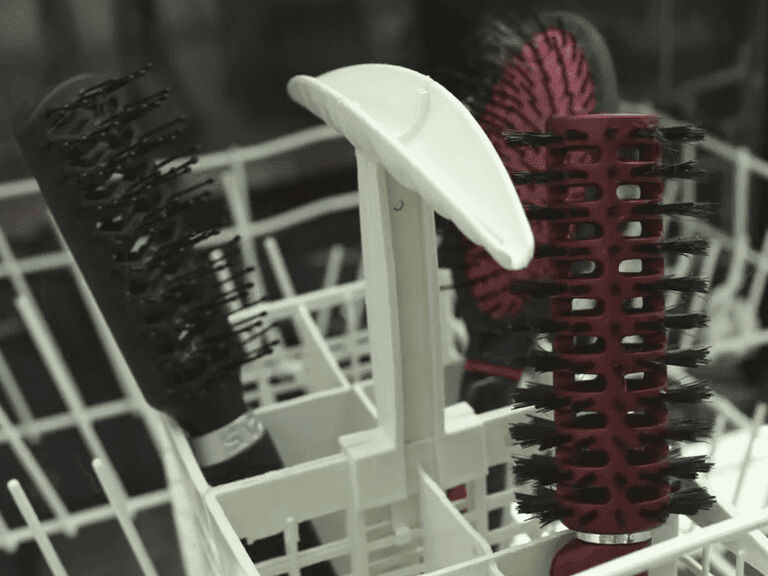
Your dishwasher can clean many things more than dishes, and many people have learned this. You can clean toys, fixtures, tools, sponges, soap pads, combs and especially hairbrushes. Hairbrushes became the subject of a famous University of Arizona study that found 3,500 colonies of bacteria to exist on a single hairbrush.
The hairy reality beyond finding this many bacteria on a hairbrush is this could be a common thing. So, many people got the idea to wash their hairbrushes in the dishwasher, because a dishwasher sanitizes with heat. This solution works best washing the hairbrush with a higher heat setting.
5. Clean your kitchen range hood cooking vent with baking soda
If you cook a lot, grease can buildup on your stove top and in your overhead cooking vent. Stir a box of baking soda with hot water to make a mixture for cleaning your range hood cooking vent. Hot water from tap is fine, but heated water from a stove top tea kettle or countertop electric kettle is better.
The more surface you must clean or thicker the buildup of grease, the more baking soda you should use. One box is usually more than enough. Using a tray like container, immerse the cooking vent completely. The baking soda will dissolve the grease.
6. Keep keyboard keys clean with adhesives

Snacking and normal eating around the computer at home or work invites unwanted food crumbs to get into the keys of your keyboard. Little particles and grains of other material come from elsewhere. Lighter than air layers of dust coat your keys, if left ignored for too long.
The lightest and worst dust accumulates beneath the keys in the form of film when it becomes heavy in the air. Post-it notes and other common office adhesives are an easy and effective way to clean all this gunk, grub and grime from all around the keys of even the filthiest keyboard.
7. Dust ceiling fans with socks and pillows
Ceiling fans are great for ventilating any room. Cleaning a ceiling fan can often be messy, however, especially if it has been neglected. A pillow case or long tube socks to wipe the blades of the fan make the job easier and less messy.
Turning socks inside-out also retains more of the dust because it sticks to the fluffy surface of the inside of the sock. A pillow case made of smooth fabric is not as good as fabric that catches the dust. This keeps dust from falling everywhere as you wipe it clean from the blades of the fan.
8. Keep your carpet clean with clear alcohol

Stains on carpet can be bad, especially on short carpet. Cooking with red meat and fish can bring all kinds of oils. While most stains stick out, others blend in. Not every stain is a dark stain. White wines and white sauces can stain carpets too.
Clear alcohol such as Vodka or rubbing alcohol can clean just about any stain out your carpet with little extra money or physical effort. Everyone has spent hundreds of dollars in their life removing stains, but you always only had to spend as much as it takes to buy rubbing alcohol and cotton swabs.
9. Squeegee clean pet hair from out of the way places
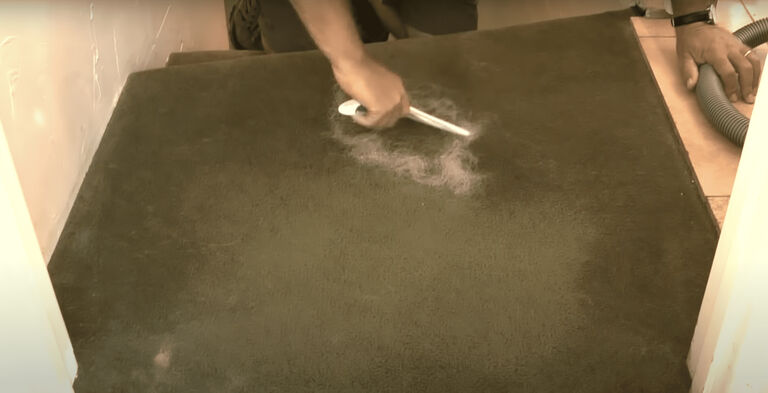
The squeegee you use for your car can also be used to clean pet hair from hard-to-reach and out-of-the-way places inside your home. A squeegee can reach into corners and creep along the upper and bottom edges of baseboards in your home, and is long enough to clean surfaces you cannot reach alone.
High up corners and overhead areas above tables and counters are accessible with a squeegee. There is no limit to where the pet hair will go as you know, but a squeegee will extend your reach and give you the ability to clean it from your home.
10. Clean your coffee grinder with stale bread
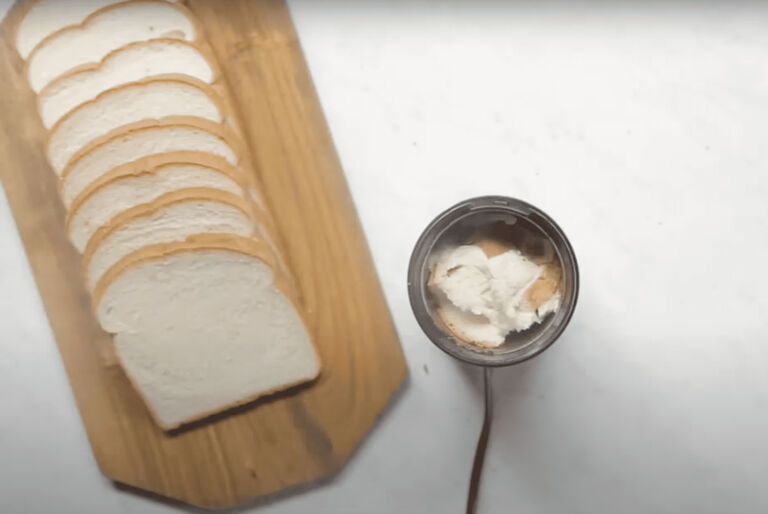
Getting the coffee grinder clean is a challenge sometimes. Grounds get into the crevices and around the rim of the bowl and into the grooves of the parts inside the bowl that make the blades. The finer you grind your coffee, the more likely it is to accumulate caked on grounds and film.
Sometimes the accumulation of fine grains began to discolor the inside of the bowl of the coffee grinder and the surfaces of the blades. Wadding up stale bread and covering the bottom of the bowl beneath the blades will catch the grounds by running the grinder again!
11. Clean gutters in the dead of Winter
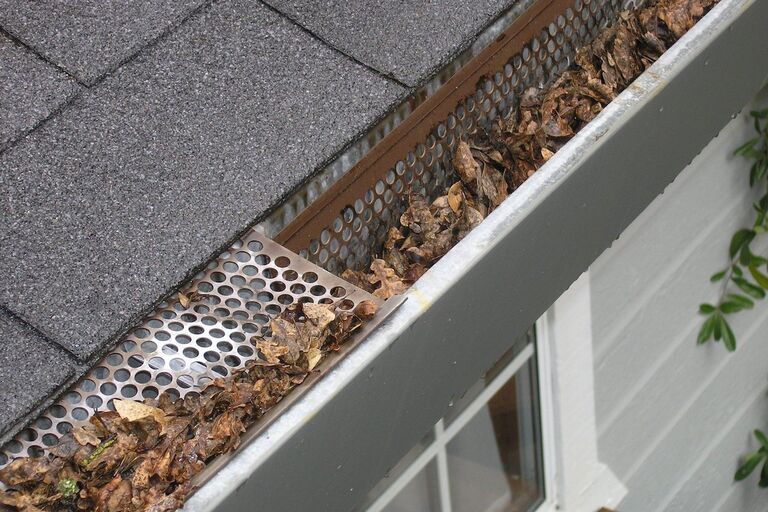
No one ever seems to clean the gutters of their home in the Winter. It is always a chore among the rest of Spring chores around the yard for most. Though the best time to clean the gutters is really not in the Spring, but actually better in the Winter.
All that gunk and garbage can be removed in meshed chunks of ice and debris in the cold of Winter. That is much easier to remove than a soupy stew of leaves, sticks, twigs and slimy things that might suddenly crawl out of the gutter and cling to your skin!
12. Vinegar baking soda rub for your tub

How to make a vinegar baking soda solvent for your tub? Jenice Findley of Fins Property Maintenance says use one-cup vinegar, and one-half cup baking soda…
Mix the rub into hot water. Pour into the tub to cover the surface of the bottom. Allow it to sit 5 minutes. Fill the tub with hot water until quarter-full. Let the water sit 5 more minutes. Release the drain. Rinse thoroughly. You’re done!
This allows the mixture to dissolve stains and decompose annoying buildup that is hard to get rid of because it is embedded in grooves around a drain or fixtures.
13. Salt and lemon for cleaning your cutting board

Your cutting board is where you cut your vegetables, meat and fruit. If you are not keeping it clean regularly, it is only because it is not being used. Cleaning a wooden cutting board is not just about killing germs. You must remove the food on the surface and much of the food absorbed into the surface.
A mixture of salt and lemon juice from fruit or from a jar is abrasive enough to scrub the cutting board clean. The salt works on the top of the cutting board surface. The lemon juice helps decompose stains absorbed into the surface.
14. Pour baking soda and vinegar down a dirty drain

As any plumber will tell you there are clogs that come apart from chemical reactions, such as baking soda and vinegar. Other clogs are things like hairballs, and require standard plunging or a snake. For clogs and buildup in a dirty drain that cannot be fixed by the plunger.
First pour some hot water down the drain. Next pour down a half cup of baking soda. Chase it with a cup of vinegar and wait. Let it sit for a moment. The chemical reaction this creates within the drain will dissolve many kinds of clogs that your plunger cannot handle.
15. Lemon oil as an oven cleaner
Lemon oil acts as an aromatic solvent in the oven. Of all the oven cleaning agents out there, the best is essential lemon oil. Even commercial products prove it by including lemon oil alongside of other chemicals and cleaning agents. Yet, the secret is that lemon oil itself is all you need.
Lemon oil as an additive mixed with chemicals achieves nowhere the same level of clean as used alone. You can clean an oven in less time with less scrubbing. Lemon oil is also much safer than many toxic commercial oven cleaners that cannot achieve the same natural clean.
16. Steam clean outdoor grills with wet paper towels

A grill is always in need of cleaning, no matter how much you try. One easy way to reduce extra cleaning is to use paper towels. When the grill is still scolding hot, wet a bunch of paper towels and literally cover your grill with them in a thick blanket.
This will cause the grease to bake onto the paper towels. As the steam breaks apart the oil and grease, it covers the paper towels. When the grill is cool all you have to do is peel the paper towels from the grill and dispose them into a plastic bag.
17. Get rid of couch stains using clear alcohol
Couch stains are a pain to clean using costly and potentially harmful commercial products, but are very easy and safely removed using clear alcohol. The stronger and more potent the alcohol the better. Vodka is a good choice of clear alcohol, and one we already know we can use for carpets. Vodka even comes as 200-proof at a price.
This may be more than you need. Rubbing alcohol is another good choice as we know, and easier and cheaper to buy than undiluted Vodka. Not only does this method eliminate the stain, but much of any odor that might exist.
18. Dust window blinds with old socks

Window blinds very quickly build up dust and grime over time, and it becomes easy to see when they need cleaning. Only cleaning blinds is messy and you risk getting that messy crude all over the floor or floating freely through the air in the room to a new location.
It is better to use old socks turned inside-out. This allows the fluffy inside of the sock to catch the dust and dirt before instead of come loose when wiped from the surface of the blinds. You can then dispose of the lint into a plastic bag, and you’re done!
19. Keep old butter knives to clean air vents
Old butter knives are helpful for cleaning the crevices of places that are hard to get into. Many air vents in your home regularly acquire dust, and if left alone begin to form veils of dust that open like curtains when the heat or AC kicks on.
This sort of thing is quickly removed using an old, decommissioned butter knife to clear the dust and lint from vents in various rooms of your home. Keeping old kitchen utensils like butter knives instead of pitching them is a good idea because they can be turned into handy tools for such use.
20. Coffee filters for dusting electronics

Electronics get dusty fast. The dust that accumulates on electronics is hard to remove because it seems like many cloth surfaces will only smear the grime around. Using things like cleaning agents on electronics is limited to specific products that may be unavailable.
It is not always true you will have an air can on-hand, for instance, and many people do not like using the air can. Coffee filters are a useful substitute because they will pick up the grime instead of spread it around. Dust also tends to cling to a coffee filter because of its texture and composition.
21. Use a seam ripper to clean vacuum heads
A seam ripper such as used by a seamstress or for everyday sewing is a good tool for cleaning out your vacuum head. A sewing tool for cutting and removing stitches, a seam ripper can remove the strands of hair, fabric, threads of carpet and other miscellaneous items that end up wound around the roller and tangled up inside the vacuum head elsewhere.
This not only keeps your vacuum clean of unsightly filth that seems to create a smell when the vacuum head is spinning, but it also ensures you are not wearing out your vacuum head before its time.
22. Make old shoes look new again with nail polish remover
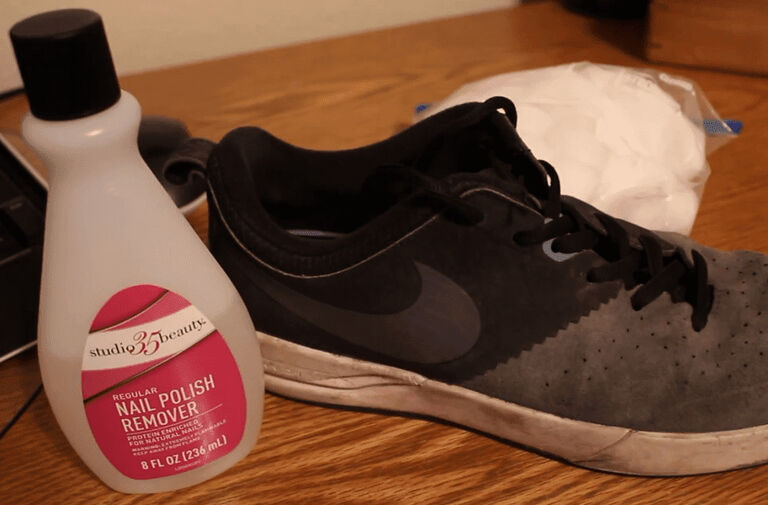
Sneakers and other fancy footwear you love to keep clean often need cleaning too. Shoes take on wear and tear and discoloration from stains, but cleaning them is usually believed to be more of a challenge than it really is.
You can clean some of the worst stains and from your shoes and boots with only a little bit of nail polish remover. Simply dab a bit of the nail polish remover on the affected spot and wipe clean with a wet rag or paper towel. Repeat the process for each affected area until your shoes look vibrant and new!
23. Make lint cleaning easy by using an old tee
Lint in your drier is not only dirty, it’s dangerous. If lint is not cleaned from the drier filter regularly it could cause a fire. This messy job is very often coveted by children in a household, if you remember wanting to be the one to scrape the mat of lint out of the filter when it was thick.
The truth is it should never get that thick. This job is less messy if you swipe it clean with an old tee, saving your hands from getting all dry and dusty and dirty from handling the lint in the filter.
24. Vinegar and baking soda recipe to soak oven racks clean
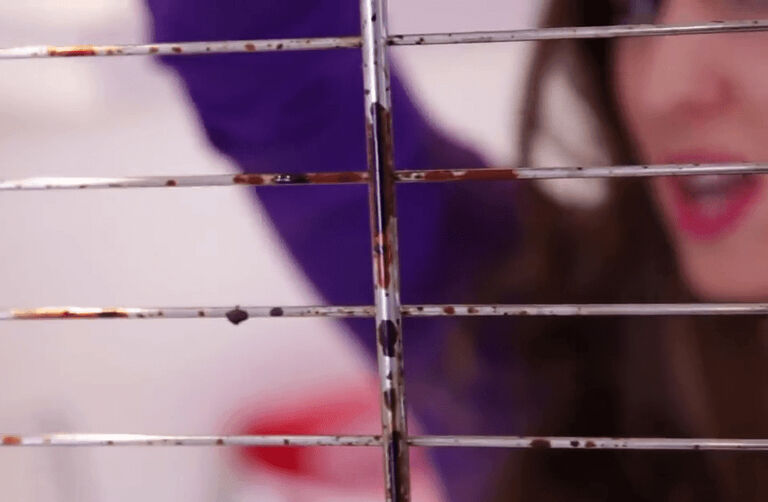
Just as you can get a range hood cooking vent clean with hot water and baking soda, you can get oven racks clean with another such mixture. You can do something similar with vinegar and baking soda for your oven racks.
Simply immerse your oven racks into a tray with one bottle of vinegar until the vinegar absorbs the grease and oil. The baking soda helps break down the baked on bits of food and grease and layers of oil caked on the oven racks. Once soft enough, you should be able to wipe away the residual grease and grime.
25. Use bread balls to clean spills from delicate surfaces
Many spills are not easy to clean on a surface because of it might be wood or bamboo, a table or tray that may absorb the spill. A fast easy approach is to take a slice or two from your bread loaf and make it into a bread ball you can use like a sponge.
The bread balls soak up the spill before it sinks below the surface. Wine spills on wood that need to be removed immediately after they occur are a good example of how to use bread balls to clean the spill in this way. You should really try this!
26. Dust screens with an adhesive lint roller

Dirt and crude become stuck inside window and door screens. Vegetation and dead insects begin to cover the mesh along with bird droppings and things from inside your home when you have the windows open and the wind is blowing through them.
Things like dust, lint and pet hair. You might feel like you must take each screen out and scrub it down with soapy water, but this isn’t always necessary. Using an adhesive lint roller for clothes often removes this mess on your screen. At least, buying you time before you have to use the hose on them again.
27. Keep good pots and pans clean with olive oil
Mat Franken from Aunt Fannie’s says to clean your good pots and pans with olive oil. This allows you to scrub delicate and rough surfaces of pots and pans without scratching them or damaging them.
Olive oil acts as a natural solvent and can break down baked grease and burned-on grime just as well as (and often better than) commercial soaps can. You can remove blemishes and stains in this way on steel, titanium, and non-stick pots and pans. Iron pots and pans are ideal candidates for cleaning with almost only olive oil, using very little soap and water ever.
28. Create a concoction to clean unseen kitchen grease
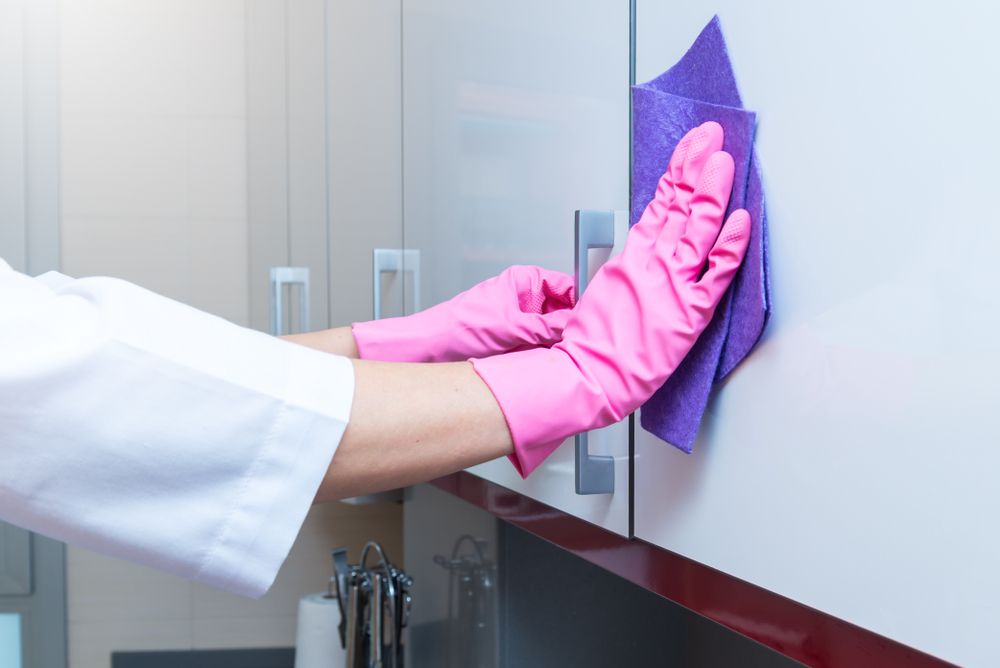
Kitchen cabinets become oily and greasy too, and eventually need cleaning inside and out. You can always polish and wax your nice wooden cabinets, but this is not going to be the way you clean them every time you choose.
A simple recipe of baking soda and vegetable oil is both abrasive enough and delicate enough to use on these surfaces, allowing you to more easily wipe these surfaces clean with fresh rags and paper towels. Even if your cabinets are not made of wood, you can use the same solution. The vegetable oil, however, is ideal for wood surfaces.
29. Remove pet odors with vinegar and oil
Getting rid of pet odors is never easy. Getting pet odors out of furniture is harder than removing them from anywhere else. That is because pet accidents go deep inside furniture, whereas on carpets and rugs the floor is the deepest they go.
Getting rid of these annoying odors when they occur requires only vinegar and oil. The vinegar will evaporate and take the pet odor with it. The more pet odor you must remove, the more vinegar you should use. Replace the odor with essential oils to deter the pet from choosing the same spot as a bathroom again.
30. Use a solution to sterilize plastic cutting boards
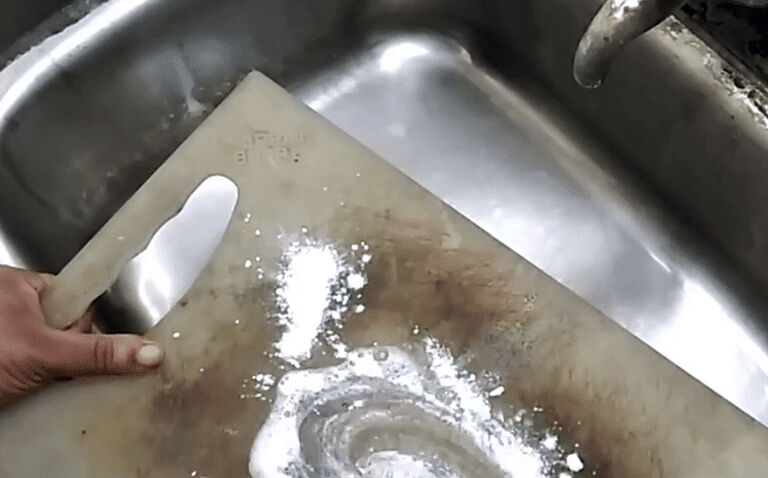
Plastic cutting boards must be handled differently than wooden cutting boards when being cleaned and sanitized. Lemon juice and salt are what you use for wooden boards, but for plastic boards we need a different solution to do the trick.
Plastic boards require a special mixture of baking soda, dish washing soap and hydrogen peroxide. Stir in enough of each ingredient to make a thick, bubbly purée that can be used to scrub the plastic cutting board using a sponge or washcloth. This will not only wash and sterilize, but also give the plastic cutting board a clean, fresh scent.
31. Use ammonia to clean greasy stovetops
Stovetops get very greasy and oily from cooking. If you have a gas stove this is especially true for you because you have to take apart the burner covers and clean them separately. It can be a major chore to scrub these clean, and commercial products do not seem to make the job easier.
Fortunately, this gruesome task can be made more tolerable using ammonia. Seal the burner covers into a plastic bag with a bit of ammonia overnight. Remove them the next day when all of the oil and grease has dissolved from the burner covers into the ammonia.
32. Use Pine-Sol to revitalize your toilet bowl brush

Pine-Sol in the toilet bowl is a good way to clean your toilet brush. You may think, why? After all, it is always being used to clean, shouldn’t it be clean? Yes, but it also sits inside its carriage, where it dries after cleaning the toilet bowl.
The other things in the carriage combined with things that survive on the brush after cleaning the toilet bowl should be guarded against as well. A cleaning agent like Pine-Sol is ideal for sanitizing the toilet brush after cleaning the toilet bowl. Also, you get the fresh scent of Pine-Sol in your bathroom.
33. Clean toys in the washing machin
Washing toys in the washing machine is easy and something you should do regularly to keep them clean. After all, toys spend a lot of time on the floor, and are shared by children and sometimes also pets.
You can wash toys in a washing machine by putting them in a mesh bag or other laundry bag, and putting them into the washer. Be sure to set the washing machine to rinse without a spin cycle. Laundry soap, hot water, and even added bleach could be used to ensure the toys are properly sanitized before going back into the playpen.
34. Wash pillows with tennis balls to keep them fat and fluffy

Pillows are not easy to wash because they tend to lose their fluff after the first few washings. This is because they are filled with water and rinsed dry on a spin cycle. After that they are tumbled dry and shrink in the heat of the drier.
One of the things to deter the shrinking of pillows in the drier is to put tennis balls into the drier without using heat. The tennis balls absorb moisture released by the pillows, allowing them to dry faster, shrinking less. Using the highest spin cycle on the washer lessens time in the drier.
35. Use a toothbrush to clean your toaster
A toothbrush can clean a lot of things as we already know. A toaster often represents an issue to clean because most brushes are made of metal. Of course, never could you put a metal brush into a plugged in toaster, it could be very dangerous.
Most brushes can get stuck inside a toaster, and can even damage the inside of a toaster. A toothbrush that is usually made of plastic, however, is a safe and effective alternative to a standard kitchen brush. You can easily use the bristles of the brush to clean all the delicate and hard-to-reach places inside the toaster.
36. Use essential oils to clean toilet stains
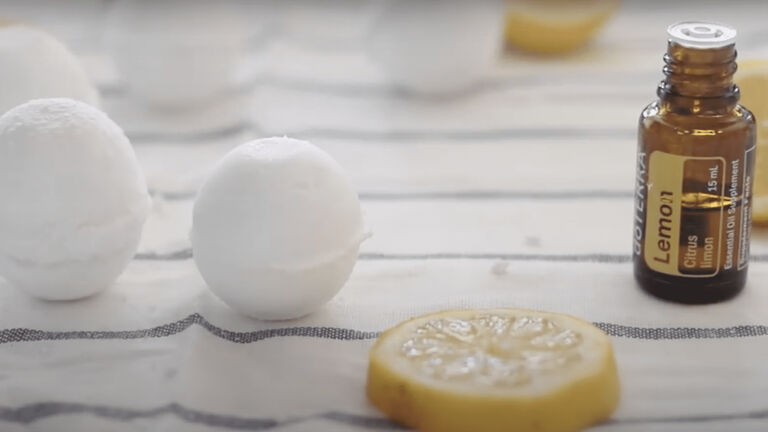
Doyle James of Mr. Rooter Plumbing says if you can’t get stains out of your toilet bowl, it may be time for a different approach. A mixture of essential oils can be used to soften and loosen the buildup that causes these stains.
If you mix 15 drops of Tea Tree Oil and 15 drops of lemon or orange essential oil and let sit in the bowl for 30 minutes, you will be able to scrub these stains clean again. The solvency of the Tea Tree Oil and the acidity of essential citrus oil decompose stubborn buildup and kill germs.
37. Vinegar and baking soda dishwasher cleaning solution
Many people assume running the dishwasher is the same as cleaning it. Since you are always cleaning dishes with it, it is always clean right? Well, maybe not. While this is basically true, there are other things to keep clean in a dishwasher that require cleaning agents, such as bacteria and microbes that may not be desirable on your dishes.
Periodically, cleaning your dishwasher requires only a jug of vinegar and baking soda. To thoroughly sanitize and refresh your dishwasher pour the vinegar into the dishwasher. Empty the box of baking soda into the vinegar, and run for one cycle.
38. Lemon and vinegar microwave freshener

Sliced lemon and one-quarter cup of white vinegar set in a small bowl inside your microwave for a few minutes will freshen it up completely. When you open the door again the concoction will hit you with an aromatic wave and sometimes even a lemony flavor you can taste in the air.
Any baked-on food and stains will soften from the vapor, and can easily be wiped from the inside with a paper towel. Vinegar, as we all know, acts as a cleaning agent, impeding the spread of germs and unwanted microbes. Lemon adds a strong, fresh scent that lingers.
39. Use chalk to remove grease from walls
Cooking in the kitchen often yields grease marks. Strangely these grease marks may turn up elsewhere, such as in the bathroom or by doors with more traffic in your home. Who knows what they may be made of?…but, they are not all the same.
Many oils and fluids come from jobs or tools used around the home, but cooking in the kitchen puts the most grease on walls. Rubbing chalk on these oily streaks and blemishes soaks up the grease until it is thin, allowing you to wipe the residual film clean from the surface with a soapy paper towel.
40. Bathroom tissue roll crevice cleaner

A toilet paper roll when it runs out of paper becomes a brown cardboard cylinder we usually crush and pitch. However, it is good to keep one handy because it can be used as a crevice cleaner on the nozzle of a vacuum attachment.
You can easily use it to go into the dark and damp places in your bathroom you do not want to let get dirty at all, such as shower windows, cabinet corners and underneath the toilet. Using the bathroom tissue roll over the nozzle keeps the nozzle clean, and you can pitch the dirty cardboard tissue roll.
Source: www.traveltips.cc
